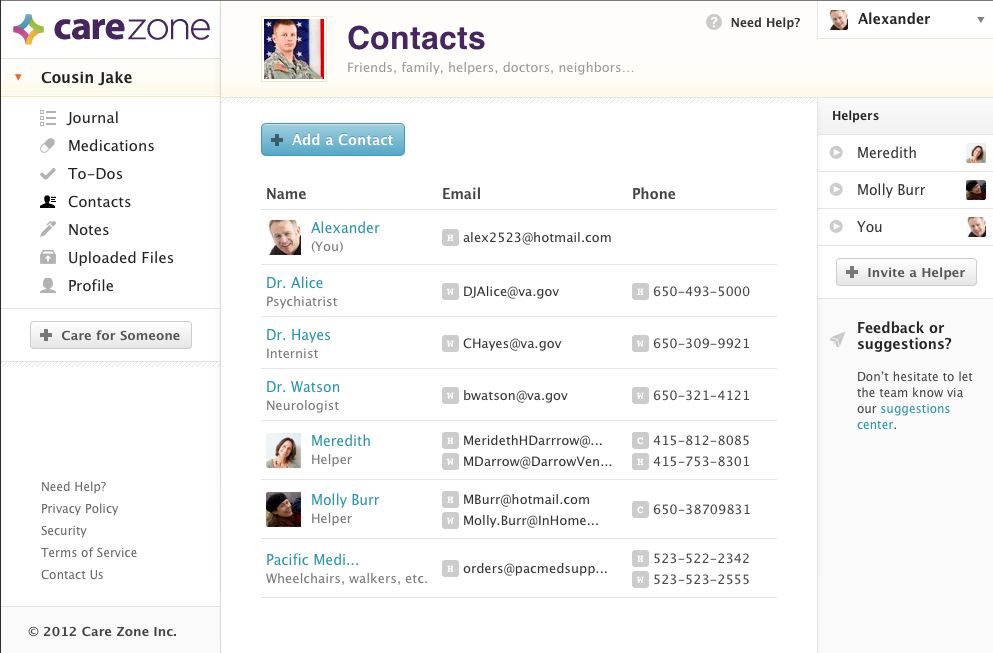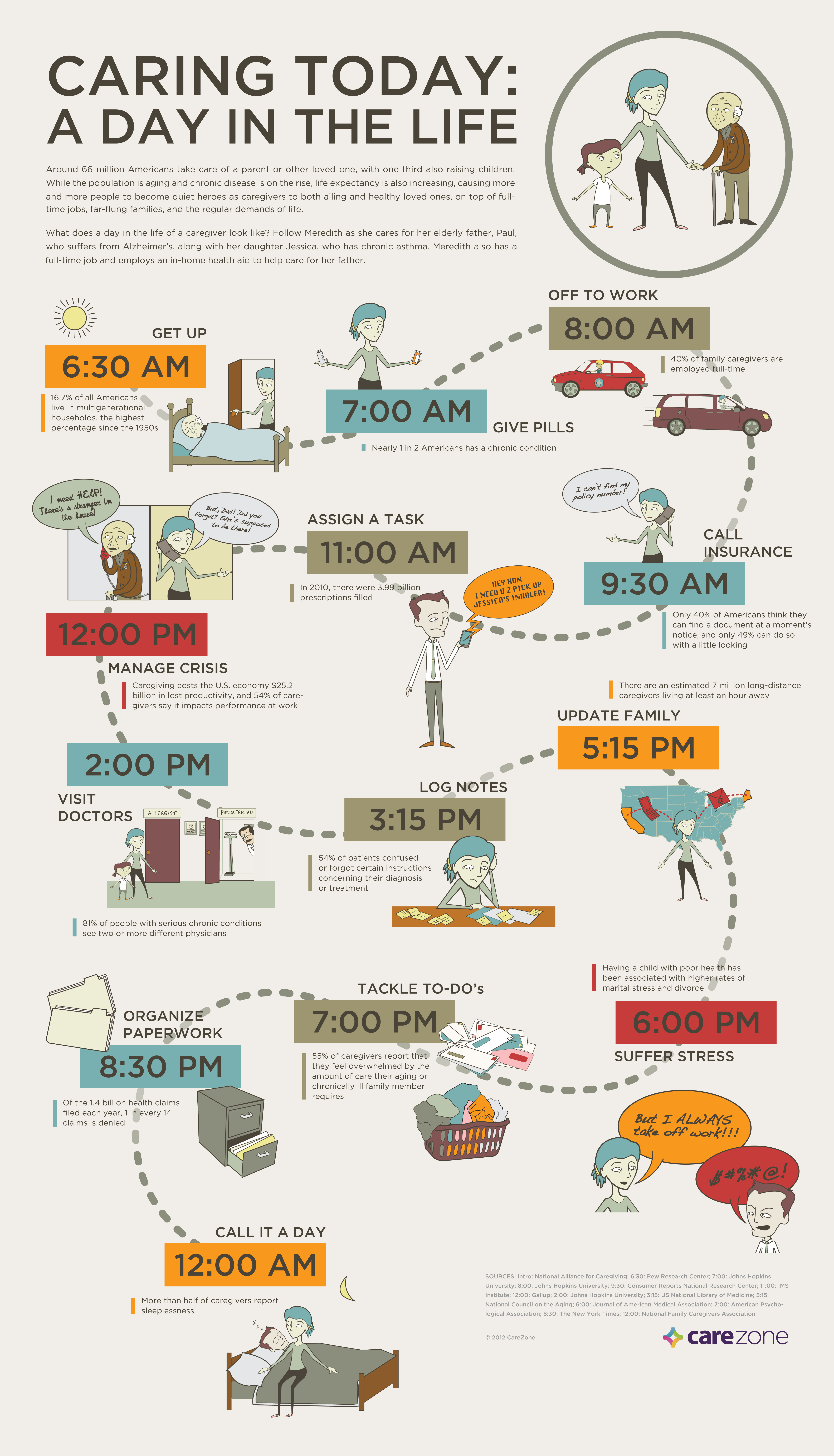The problem that former Sun Microsystems chief executive Jonathan Schwartz is trying to fix with his new startup is clear enough.
More and more people are having to care for older relatives as the US population ages, and many of these people have kids to take care of, too. But, the current online methods for sharing sensitive health information aren’t always appropriate. Emailing caregiver information can lead to tastelessly targeted ads on Gmail or Facebook. Online project management software may be too bloated or insecure for sharing medical histories between just a few people. Offline documents — the most common form of communication in this area — are simply hard to share between all the people who need access.
So his company, CareZone, is launching publicly today with an extremely simple answer: a productivity tool for caregivers. At this point there’s not a single feature that is only relevant to the job it’s trying to solve. But the collection of them is designed thoughtfully for the purpose of the site, and could prove to be the start of a much more comprehensive answer to streamlining online health care.
The interface today will remind you of Yammer (that is, a really simple private version of Facebook), or maybe of other tools like Basecamp. You create an account, and then you can create profiles that you control for the people you’re taking care of. So, maybe a sick grandparent or child — which are both personal use cases for Schwartz, by the way.
The structure of the site is focused around each profile of each person receiving care, which is the equivalent of teams or projects in other types of productivity interfaces. As the creator of a profile, you can invite other users to receive access, which you can easily revoke at any time. Those you might invite include professional caregivers, other friends and relatives who are helping out, and medical staff. The site is organized to show lists of those receiving care on the left, and those doing the caring on the right.
Inside of the profile, users can fill out an ongoing journal about the person receiving care, list their current medications, sketch out to-dos in list form, add any relevant contacts, share free-form notes, and upload files. The profile of the love one goes beyond basic information like name and address to include space for medical information like blood type and any allergies.
The site, from the interface to its terms of service, is designed around privacy. There are no ads — no targeting can be tasteful in this sort of environment. There are no communication channels or integrations with Facebook or twitter or anything designed to increase growth, simply because it’d be inappropriate for most friends on those services to have access.

The business model, instead, is a month subscription of $5, or $48 per year for each profile of someone receiving care. If you need to create multiple accounts because you have more than one person to care for, Schwartz says you’ll be able to get a volume discount. You can get a free account for a year if you sign up by March 15, including up to three accounts for loved one’s profiles.
The overall market is as big as the health stats you see about the US population. Schwartz highlights that around 90% of those 65 and older have a chronic issue, and that 400,000 babies are born in the country every month.
A simple tool like this could very well be what a lot of people want, but it also might not go far enough to get users away from their manila folders of offline docs, or their private Basecamp setups or whatnot. Schwartz, who is cofounding the company along with long-time friend and entrepreneur Walter Smith, has a bigger vision in mind, though.
He’s looking at ways this site could be a main portal for connecting to all sorts of other health information. All sorts of health devices and applications starting to provide instantaneous feedback about heart rates, blood sugar levels, average temperatures, and every other aspect of human life. You could see this interface becoming more of an aggregator for all this data.
Another area, and the one that seemed most obvious to me when I was getting briefed on the launch, was connecting with existing enterprise medical systems in order to integrate all the data about an individual from multiple providers. Schwartz was certainly interested in this when I asked him about it, but was also very cautious. Having spent most of his career in the enterprise software business, he’s very much aware of the difficulties of integrating legacy systems and following existing compliance laws. Health data, in particular, is tough to use because of legal (HIPAA) requirements that prohibit medical staff what they can share in writing.
For now, Schwartz says CareZone is focusing on simple iterations: internationalizing to Spanish, Mandarin and other languages, as well as making sure that the site follows all local laws, particularly in countries with far more restrictive privacy laws than what this one has. But he’s already looking at how to make CareZone more of a portal. One feature that I discussed with him was some sort of service for bulk scanning and uploading relevant offline docs into the system. Some other ones were some sort of budgeting system for health-related costs, and a calendar for tracking relevant dates.
Finally, here’s an infographic from the company that, in contrast to all the clip-art garbage infographs produced by other companies, actually helps tell the story:

